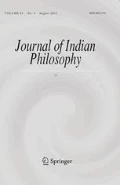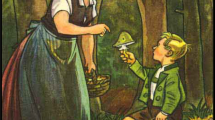Abstract
The scope and audacity of Bhaṭṭoji Dīkṣita’s (16th c.) contributions to Sanskrit grammar has made him one of early-modern India’s most influential, if not controversial, intellectuals. Yet for as consequential as Bhaṭṭoji’s has been for histories of early-modern scholasticism, his extensive corpus of non-grammatical writings has attracted relatively little scholarly attention. This paper examines Bhaṭṭoji’s work on Vedānta, the Tattvakaustubha, in order to gage how issues of language became an increasingly important site of inter-religious critique among early-modern Vedāntins. In the Tattvakaustubha, Bhaṭṭoji reproaches Madhvācārya (14th c.), the founder of the eponymous Mādhva or Dvaita Vedānta system, for his use of ungrammatical words (apaśabdas). In extending his accusations of grammatical negligence to include Madhva’s early commentator Jayatīrtha (15th c.), Bhaṭṭoji sought to undermine Mādhva claims to authoritative scriptural exegesis. Bhaṭṭoji’s provocation impelled later Mādhva scholars like Rāghavendratīrtha (17th c.) to bring a sharper set of grammatical tools to core commentarial works. Where others have pointed to Vyāsatīrtha (16th c.) as a turning point for Mādhva scholastic discourse in the areas of Pūrva Mīmāṃsā and Navya Nyāya, this paper suggests that it was the post-Bhaṭṭoji scholar Rāghavendratīrtha who brought a hitherto unrivaled grammatical expertise to Mādhva writings. That both Mādhva and Advaita Vedāntins wielded grammatical legitimacy as a cudgel against the other raises important socio-historical questions about the relationship between text-criticism, conceptions of scholastic legitimacy, and inter-religious contestation in early-modern South Asia.
Similar content being viewed by others
References
Primary Sources
Anargharāghava of Murāri with commentary of Rucipati. Bombay: Nirnaya Sagar Press, 1929.
Anuvyakhyāna of Madhvācārya in Prasthānatrayī. Udipi: Mādhwa Mahā Mandala, 1969.
Apāṇinīyaprāmāṇyasādhanam of Nārāyaṇabhaṭṭapāda, edited with introduction and English translation and notes by E.R. Sreekrishna Sarma. Tirupati: Sri Venkateswara University Oriental Research Institute, 1968.
Bhaṭṭojijñātiviveka of Vasudev Anant Bambardekar. Mumbai: self published, 1939.
Bhāmatī of Vācaspatimiśra. Benares: Benares Printing Press, 1880.
Bhāvadīpa of Rāghavendratīrtha in Brahmasūtrabhāṣya of Madhvācārya. Dharwad: Karnataka Historical Research Society, 1980.
Brahmasūtrabhāṣya of Madhvācārya with the Tattvaprakāśikā of Jayatīrtha and Bhāvadīpa of Rāghavendratīrtha. Dharwad: Karnataka Historical Research Society, 1980.
Brahmasūtrabhāṣya of Madhvācārya with the glosses of Jayatīrtha, Vyāsatīrtha, and Rāghavendratīrtha. Mysore: Government Branch Press, 1911.
Brahmasūtrabhāṣya of Madhvācārya in Prasthānatrayī. Udipi: Mādhwa Mahā Mandala, 1969.
Dhātupāṭha of Pāṇini with the Dhātvarthaprakāśikā. Varanasi: Chowkhamba Sanskrit Series, 1969.
Kāśikā of Vāmana/Jayāditya. Benares: Medical Hall Press, 1898.
Liṅgānuśāsana of Durgasiṃha. Ed. Dattatrey Gangadhar Koparkar. Pune: Deccan College, 1952.
Madhvatantramukhamardana with Vidhvaṃsanam of Appayyadīkṣita. Pune: Ānandāśramamudraṇālaya, 1940.
Nyāyasudhā of Jayatīrtha with Vākyārthacandrikā of Vidyādhīśa, Sudhāvivṛtiḥ of Satyavratatīrtha, Parimalaḥ of Rāghavendratīrtha, Sudhāṭippaṇī of Yadupatyācārya, Ṭikādhṛtasudhāvākyārthavivaraṇam of Śrīnivāsatīrtha, and Caṣakaḥ of Nārīkṛṣṇācārya. Bengalore: Uttarādimaṭha, 1983.
Nyāyavivaraṇa of Madhvācārya in Prasthānatrayī. Udipi: Mādhwa Mahā Mandala, 1969.
Padamañjarī (Kāśikāvyākhyā) of Haradattamiśra, reprint from the Pandit. Benares: Medical Hall Press, 1894.
Prakāśa of Rāghavendratīrtha in Brahmasūtrabhāṣya of Madhvācārya. Mysore: Government Branch Press, 1911.
Prasthānatrayī of Madhvācārya. Udipi: Mādhwa Mahā Mandala, 1969.
Rāghavendravijāya of Nārāyaṇācārya. Nanjanagudu: 1958.
Siddhāntakaumudī of Bhaṭṭoji Dīkṣita with the Balamanorama of Vāsudevadīkṣita. Tiruchirappalli: St. Joseph Industrial School Press, 1911.
Tantrādhikārinirṇaya of Bhaṭṭoji Dīkṣita. Luknow: Akhila Bāratīya Saṃskṛtapariṣad, 1996.
Tātparyacandrikā of Vyāsatīrtha in Brahmasūtrabhāṣya of Madhvācārya. Mysore: Government Branch Press, 1911.
Tattvakaustubha of Bhaṭṭoji Dīkṣita. Kumbakonam: Advaita Sabha, 1964.
Tattvakaustubha of Bhaṭṭoji Dīkṣita, Bhandarkar Oriental Research Institute, ms. 319/1899-1915, third pariccheda.
Tattvakaustubha of Bhaṭṭoji Dīkṣita. Ms. no. 11/42 in Catalogue of the Anup Sanskrit Library vol. 5, ed. C. Kunhan Raja and Madhava Krishna Sarma, Bikaner: 1945.
Tattvakaustubhakhaṇḍana (Tattvadīpika) (Anonymous), Mysore Oriental Research Institute ms. no. 43119/C.
Tattvakaustubhakuliśa of Setumādhavācārya. Tirumala: Samudra Prakāśitam, 1957.
Tattvaprakāśikā of Jayatīrtha in Brahmasūtrabhāṣya of Madhvācārya. Dharwad: Karnataka Historical Research Society, 1980.
Vedāntapārijātasaurabha of Nimbarka with Vedāntakaustubha of Śrīnivāsācārya and Kaustubhaprabhā of Keśavakāśmīribhaṭṭācārya. Vṛndāvana: Śrīnityasvarūpabrahmacārī, 1905.
Vyākaraṇamahābhāṣya of Patañjali. Bombay: Government Central Book Depot, 1880.
Secondary Sources
Bali, S. (1976). Bhaṭṭoji Dīkṣita: His contribution to sanskrit grammar. New Delhi: Munshiram Manoharlal.
Belvalkar, S. K. (1915). An account of the different existing systems of sanskrit grammar. Poona: Aryabhushan Press.
Bronkhorst, J. (2012). Bhaṭṭoji Dīkṣita and the revival of the philosophy of grammar. In C. Watanabe, M. Desmarais, & Y. Honda (Eds.), Saṃskṛta-Sādhutā = Goodness of Sanskrit: Studies in honour of professor Ashok Aklujkar (pp. 54–85). New Delhi: Manohar.
Bronner, Y. (2015). The power of primacy and the domination of the injunction: Appayya Dīkṣita’s two personas in a debate about vedic hermeneutics. The Journal of Hindu Studies,8(1), 111–123.
Deshpande, M. (2011). Will the winner please stand up: Conflicting narratives of a seventeenth-century philosophical debate from Karnataka. In T. R. Trautmann & C. Talbot (Eds.), Knowing India: Colonial and modern constructions of the past: Essays in honor of Thomas R. Trautmann (pp. 366–380). New Delhi: Yoda Press.
Deshpande, M. (2012). Bhaṭṭoji Dīkṣita’s perceptions of intellectual history: Narrative of fall and recovery of the grammatical authority. In C. Watanabe, M. Desmarais, & Y. Honda (Eds.), Saṃskṛta-Sādhutā = Goodness of Sanskrit: Studies in honour of professor Ashok Aklujkar (pp. 172–196). New Delhi: Manohar.
Deshpande, M. (2014). Appayya Dīkṣita and the lineage of Bhaṭṭoji Dīkṣita. Journal of Indian Philosophy,44(1), 115–124.
Fisher, E. M. (2017). Hindu pluralism: Religion and the public sphere in early modern South India. Oakland, CA: University of California Press.
Freschi, E., & Philipp, A. M. (2017). Adaptive Reuse: Aspects of Creativity in South Asian Cultural History. Wiesbaden: Harrassowitz Verlag.
Ganeri, J. (2008). Contextualism in the study of Indian Intellectual Cultures. Journal of Indian Philosophy,36(5-6), 551–562.
Gerow, E. (1987). The Dvaitin as deconstructionist: Viṣṇudāsācārya on ‘Tat Tvam Asi’: Part 1. Journal of the American Oriental Society,107(4), 562.
Gode, P. K. (1940). A new approach to the date of Bhaṭṭoji Dīkṣita. Journal of the Sri Venkatesvara Oriental Institute,1, 117–127.
Gode, P. K. (1955). The contact of Baṭṭoji Dīkṣita and some members of his family with the Keladi rulers of Ikkeri between c. AD. 1592 and 1645. Journal of the Oriental Institute, University of Baroda,4(1), 33–36.
Lander, J. M. (2006). Inventing Polemic: Religion, Print, and Literary Culture in Early Modern England. Cambridge: Cambridge University Press.
McCrea, L. (2015a). Freed by the weight of history: Polemic and doxography in sixteenth century Vedānta. South Asian History and Culture,6(1), 87–101.
McCrea, L. (2015b). Over when it’s over: Vyāsatīrtha’s hermeneutic inversion. The Journal of Hindu Studies,8, 97–119.
Mesquita, R. (2008). Madhva’s quotes from the Purāṇas and the Mahābhārata: An analytic compilation of untraceable source-quotations in Madhva’s works along with footnotes. Delhi: Aditya Prakashan.
Minkowski, C. (2011). Advaita Vedānta in early modern history. South Asian History and Culture,2(2), 205–231.
Minkowski, C. (Ed.). (2016). Appayya Dīkṣita and his contexts. Special Issue, Journal of Indian Philosophy, 44(1), 11–39.
Minkowski, C. (2016b). Maryādām Ullaṅghya: The boundaries of interpretation in early modern India. In A. Grafton & G. W. Most (Eds.), Canonical texts and scholarly practices (pp. 90–109). Cambridge: Cambridge University Press.
Minkowski, C., O’Hanlon, R., & Venkatkrishnan, A. (2015). Social history in the study of Indian intellectual cultures. South Asian History and Culture,6(1), 1–9.
Okita, K. (2014). Hindu theology in early modern South Asia. Oxford: Oxford University Press.
Pollock, S. (2001). New intellectuals in seventeenth-century India. Indian Economic & Social History Review,38(1), 3–31.
Sharma, B. N. K. (1961). History of the Dvaita School of Vedānta and its literature. Delhi: Motilal Banarsidass.
Shastry, A. K. (1982). A history of Śriṅgeri. Dharwad: Karnatak University Press.
Shastry, A. K. (2009). The records of the Śṛiṅgeri Dharmasaṃsthāna. Śṛiṅgeri: Śṛiṅgeri Maṭha.
Stoker, V. (2007). Vedic language and Vaiṣṇava theology: Madhva’s use of Nirukta in his Ṛgbhāṣya. Journal of Indian Philosophy,35, 169–199.
Acknowledgements
An earlier draft of this paper was presented at the 17th World Sanskrit Conference in Vancouver, Canada (July, 2018), where conversations with Lawrence McCrea, Christopher Minkowski, Radhika Blinderman, and my fellow panelists pushed my thinking on various aspects of this paper. Since then, I have greatly profited from conversations with Ajay Rao, Srilata Raman, and Anusha Sudindra Rao. My deepest gratitude goes to my teacher of Vyākaraṇa, H.V. Nagaraja Rao. Any and all mistakes are mine alone.
Author information
Authors and Affiliations
Corresponding author
Ethics declarations
Conflict of interest
On behalf of all authors, the corresponding author states that there is no conflict of interest.
Additional information
Publisher's Note
Springer Nature remains neutral with regard to jurisdictional claims in published maps and institutional affiliations.
Rights and permissions
About this article
Cite this article
Peterson, J.R. The Language of Legitimacy and Decline: Grammar and the Recovery of Vedānta in Bhaṭṭoji Dīkṣita’s Tattvakaustubha. J Indian Philos 48, 23–47 (2020). https://doi.org/10.1007/s10781-019-09406-0
Published:
Issue Date:
DOI: https://doi.org/10.1007/s10781-019-09406-0



